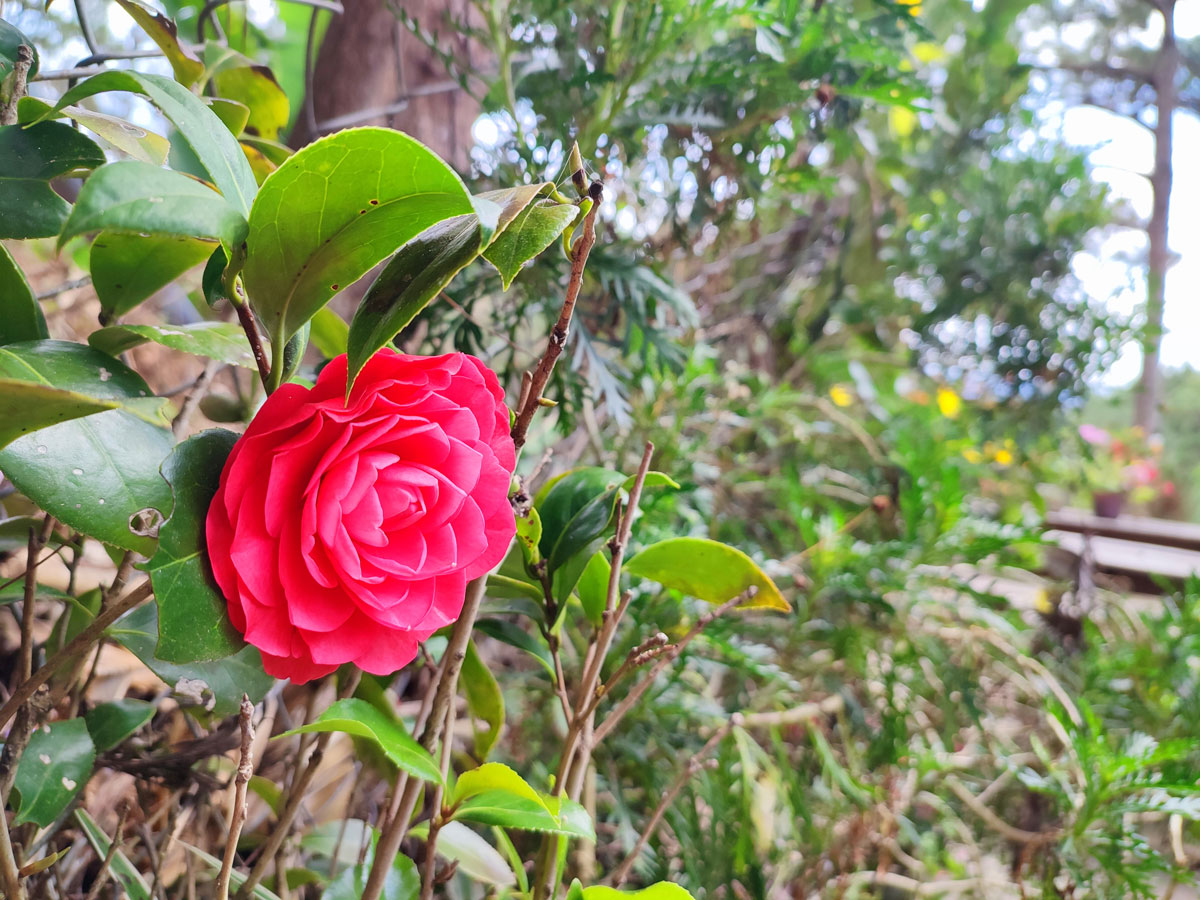Contents
I. The mystical wordless teaching styles of Eastern sages.
II. Zen Buddhism towards Spiritual Awakening through Meditation.
III. Taoism of Flow towards Ultimate Harmony in Life and Nature (inspired by Lao Tzu)
IV. Philosophy of Zen and Flow in a nutshell
V. List of Books and References.
I. The Mystical, Wordless Teaching Styles of Eastern Sages
When it comes to studying Eastern religions and philosophies and sharing some insights with my Western friends, I cannot simply provide them with quotes from a “Great Book” along with a quick and clear interpretation, as they often do with their beloved Ultimate Bible. Approaching Eastern religions and philosophies actually requires time to navigate a tremendously rich doctrinal and textual background of various teachings, sutras, and scriptures. From these, we need to carefully select and piece together elements for gradual contemplation and thorough reflection, and then incorporate what we’ve absorbed into our own words.
You can only share Eastern philosophies with others once you have truly sensed the meaning behind them (to feel with all matters of the heart and mind) and translated them into your own soul letters. This has always been the style of great sages from the East.
“For 49 years, I have not said a word…” – Buddha
“A special transmission outside the scriptures, (Giáo ngoại biệt truyền/ 教 外 別 傳)
Not standing upon words and letters; (Bất lập văn tự/ 不 立 文 字)
Directly pointing to the mind and heart (Trực chỉ nhân tâm/ 直 指 人 心)
Seeing into one’s true nature and attaining Buddhahood.” (Kiến tính thành Phật/ 見 性 成 佛)
– A famous four-line stanza attributed to Bodhidharma (the Great Zen Master) in his teaching of Zen.
“Therefore the Master (Thị dĩ Thánh Nhân/ 是 以 聖 人)
acts without doing anything (xử vô vi chi sự/ 處 無 為 之 事)
and teaches without saying anything” (hành bất ngôn chi giáo/ 行 不 言 之 教)
– Lao Tzu – Tao Te Ching
Or according to Osho – one of the best-known philosophers, mystics, and spiritual teachers of our time – in his translation of The Diamond Sutra, the first text to record the Buddha’s own teachings and one of the most popular Buddhist sutras, especially for Zen Buddhism:
“This whole diamond Sutra points towards silence. It contains no philosophy, no system, no theory, no words, it is an empty book.”
Those all highlight the limitations of human language in conveying the enlightened ideals. In Eastern philosophies, we always need to think far beyond words to grasp the true meaning. When it comes to translate the words of Eastern sages, we will find ourselves constantly translate their mind instead of their words per se.
That is the true way to access Eastern philosophies, especially Zen Buddhism (a school of Buddhism focusing on Zen—meditation) and Taoism (The Way in Tao Te Ching by Lao Tzu).
Every time my Western friends share some beautiful quotes from their beloved Bible and ask for something similar from the East, I always begin with: “Well, I come from an Eastern culture where we embrace Zen Buddhism towards Spiritual Awakening through Zen-Meditation and the Taoism of Flow towards Harmony as a Philosophy (not a religion, to me personally)…”
As far as my walks through Eastern religions and philosophies, I’ve been really into the idea that Buddhism is a religion and a philosophy, while Taoism is naturally a pure philosophy. Among schools of Buddhism, Zen Buddhism has less of a sense of traditional religion (which usually emphasizes special worship) and more of a sense of philosophy.
Both Zen Buddhism and Taoism share a nature in common that encourages people to embrace all the differences spontaneously without any discrimination or duality and also, to be fully present…
II. Zen Buddhism: Towards Spiritual Awakening through Meditation
Among the vast treasure of various Buddhist traditions (Pure Land Buddhism, Tibetan Buddhism…), Zen Buddhism is the one that has significantly spread to different parts of the world through its inspiring meditation and Zen philosophy.
It is a branch of Buddhist tradition that emphasizes simplicity, present-moment awareness (known as Mindfulness or Chánh niệm), Non-duality (Bất nhị nguyên), Non-Conceptual (Vô niệm) and Non-ego (Vô ngã) through the powerful practice of zazen (a Japanese word means “just sitting”) meditation. This practice is the key ingredient to awakening one’s inner nature, compassion, and wisdom—a means of attaining enlightenment introduced by the Buddha.
Some main principles of Zen philosophy include continuously letting go of the ego, focusing on interconnectedness in the universe, recognizing attachment as a source of suffering, and realizing that human perception is faulty.
The Vietnamese Zen Master Thich Minh Niem also mentions the human ego as “a baby boss” in his spiritual teaching. He describes it as childish, full of desire, always asking for more feeding and more control. During our own meditation, we should face and engage with this ego to slowly let go of pieces of it.
These principles are quite close to the modern psychological ideology by Dr. David Hawkins, who discusses the ego in his teachings and contemplations, particularly in his book “Letting Go: A Pathway to Surrender.” He talks about letting go of the energy underlying our feelings, which in turn underlie the thousands of thoughts produced by the programmed ego.
Here are some of my own words after meditating and pondering upon the wise teachings from the highly recommended scripture by most Zen Masters—the Diamond Sutra—along with some profound teachings and books by Dr. David Hawkins*, an internationally renowned spiritual teacher, psychiatrist, psychologist, and developer of the widely known Map of Consciousness®:
Keep holding on to the ego,
You’ll get lost in pain, shadow and discrimination
Keep attaching to external things,
You’re still far away from the True Being*…
*Your True-Being is deeply connected with the Universal Being, and directly guided by the Higher Being which can refer to all the Divine Beings across the realms of religions.
*Dr. Hawkins is also my favorite author and mystic, who has infused the truths found in the precepts of Western religion with the core of Eastern philosophy, bridging the linear-scientific and physical world to the nonlinear and spiritual domain. His great work has been a significant source of motivation for me to pursue my second major in Psychology and Philosophy.
III. Taoism of Flow towards Ultimate Harmony in Life and Nature (Inspired by Lao Tzu)
The art of flow, or Taoism, a philosophy attributed to the Chinese philosopher Lao Tzu, along with Confucianism, the dominant teaching by the ancient Great Teacher of China, form the two great streams of Chinese culture and ideology, which have largely influenced other Asian countries such as Japan, Korea, and Vietnam…
Taoism and Confucianism are like Yin and Yang.
Confucius represents the way of the Yang, characterized by firm government, law and order, ultimate loyalty to the King, and strict cultivation of personal ethics and morality.
Meanwhile, Lao Tzu represents the way of the Yin, which prefers the soft way, the natural way, the water way, and effortless action—doing not-doing.
This is the way to be free from regular lifestyle and free from vanity while still contributing to society within one’s spontaneous nature in a downstream effort. And then one can step back when the work is done to feel the whole and the true-being, no attachment.
The basic theory of Lao Tzu’s philosophy in his ultimate book, “Tao Te Ching,” is the conception of Tao, or “The Way,” which refers to the natural order and the inherent rules of being within the Universe and Nature. One must dive into this to sense the Oneness and the True Wisdom, and non-duality (similar to Zen Buddhism).
The key practice of The Way is “Wu Wei,” meaning “effortless action” or “action-less action,” doing without doing, or doing with downstream effort. This describes a state of flow that we can learn to sense in every action we take and in everything inside and outside of us. When in this flow, without even trying, we achieve perfect harmony and perfect understanding of the current situation, totally being in the moment with full acceptance and great ease.
Similarly, the modern psychologist Mihaly Csikszentmihalyi’s flow theory (in his book – Flow: The Psychology of Optimal Experience) describes a state of complete immersion and engagement in an activity. In this state, individuals experience a sense of timelessness, lose self-consciousness, and feel a deep sense of satisfaction and fulfillment. While Lao Tzu’s Wu Wei emphasizes effortless action aligned with the natural order in a wide philosophical concept, Csikszentmihalyi’s flow particularly focuses on the psychological balance between challenge and skill, where the task at hand is achievable yet stimulating. Both concepts highlight the importance of being fully present and the profound joy that arises from this state of harmony and integration.
The Tao is like water, flowing everywhere, to the left and to the right. It loves and nurtures everything without seeking praise or approval.
The Tao is the way of being, the way in which all things are and connected, mutually.
“Being and Non-being create each other,
Difficult and Easy support each other,
Long and Short define each other,
High and Low depend on each other,
Sound and Silence harmonize with each other,
Before and After follow each other.” – Tao Te Ching
To know the Tao means to sense the Flow of Nature and Universe, the Flow inside of you and others, to build one’s personal growth within that Flow and to complete one’s goals in a downstream effort, not trying to push upstream.
To be the Tao means to be one’s true being, to be the whole without separating one’s self from other selves, to be with the Oneness without any duality.
IV. Philosophy of Zen and Flow in a nutshell
In a nutshell, both Zen Buddhism and Taoism/the Philosophy of Flow, guide people to Be in the Zone of Spiritual Awakening and Harmony – where we are fully present, fully aware of our body, our feelings and those of others. This allows us to become one with whatever we are doing, visualizing ourselves in a Flow of the Universal Nature and the Flow of our own Inner Nature.
And the very first principle of Zen Buddhism and Taoism or the Philosophy of Flow is that we should be totally open-minded to everyone and everything, to embrace different values without discrimination. Terms for this include non-conceptual, non-duality, and non-ego, all of which mean not separating ourselves from others, or things from other things.
That is when, my friend, your True-Being is manifested, deeply connected with the Universal Being, and directly guided by the Higher Being which can refer to all the Divine Beings across the realms of religions.
V. List of Books and References
Finally, I’ll leave here a List of books and references for my Viet and Asian buddies who’d love to strengthen your Eastern base, to stay local and then to go global and be open with different religious and philosophical values.
These are also for my international friends from the West and Middle who enjoy diving into some parts of the Eastern spiritual values and philosophy.
1. The Diamond Sutra – English Translation and Interpretation by Osho
2. The Diamond That Cuts Through Illusion by Thich Nhat Hanh – Vietnamese Buddhist Zen Master
3. Tao Te Ching – Lao Tzu – English Translation by Stephen Mitchell
4. Letting Go: The Pathway of Surrender – David Hawkins
5. Meditation – The First and Last Freedom – Osho
6. Finding the Missing Peace – A Primer of Buddhist Meditation by Ajahn Amaro
*More for my Viet fellas:
Kinh Kim Cang – Bản dịch và luận giải của Thiền sư Thích Thanh Từ
Kinh Kim Cang (Gươm Báu Cắt Đứt Phiền Não) – Bản dịch và luận giải của Thiền sư Thích Nhất Hạnh
Các bài giảng và dẫn của Thiền sư Thích Minh Niệm
Đạo Đức Kinh – bản Dịch và Bình của học giả Thu Giang Nguyễn Duy Cần















